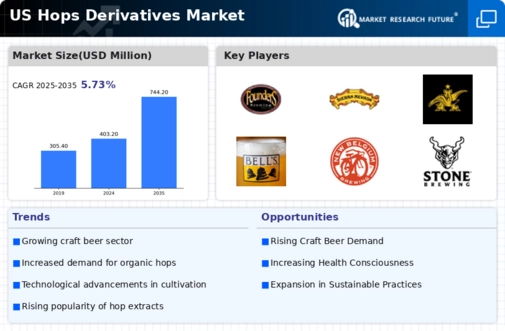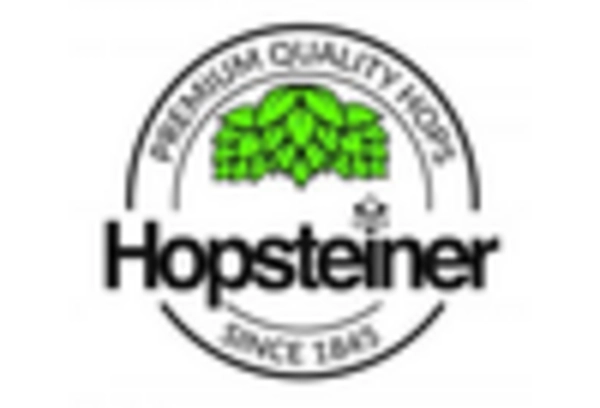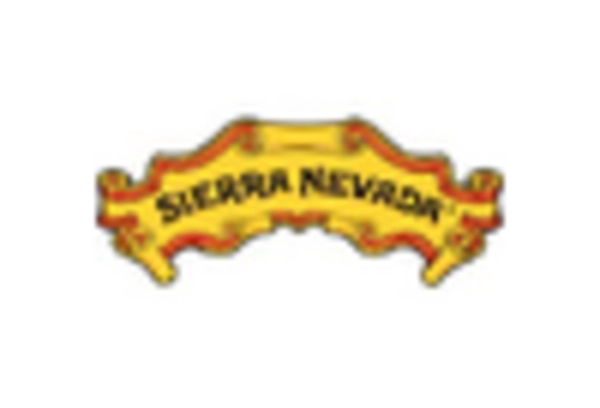The hops derivatives market is currently characterized by a dynamic competitive landscape, driven by innovation, sustainability, and strategic partnerships. Key players such as Haas (US), Yakima Chief Hops (US), and Hopsteiner (US) are at the forefront, each adopting distinct strategies to enhance their market positioning. Haas (US) focuses on technological advancements in hop processing, aiming to improve product quality and yield. Meanwhile, Yakima Chief Hops (US) emphasizes sustainability, implementing eco-friendly practices in their operations, which resonates well with the growing consumer demand for environmentally responsible products. Hopsteiner (US) is also notable for its commitment to research and development, continuously exploring new hop varieties to meet evolving market preferences. Collectively, these strategies contribute to a competitive environment that prioritizes innovation and sustainability.
In terms of business tactics, companies are increasingly localizing manufacturing and optimizing supply chains to enhance efficiency and reduce costs. The market appears moderately fragmented, with several players vying for market share, yet the influence of major companies is substantial. This competitive structure allows for a diverse range of products and services, catering to various segments within the hops derivatives market.
In October 2025, Haas (US) announced a partnership with a leading biotechnology firm to develop new hop derivatives aimed at enhancing flavor profiles in craft beers. This strategic move is likely to bolster Haas's position in the market by tapping into the growing craft beer segment, which increasingly seeks unique and innovative flavors. The collaboration may also lead to advancements in sustainable practices, aligning with current consumer trends.
In September 2025, Yakima Chief Hops (US) launched a new initiative focused on regenerative agriculture practices among its hop growers. This initiative not only aims to improve soil health and biodiversity but also positions the company as a leader in sustainability within the hops derivatives market. By promoting these practices, Yakima Chief Hops (US) is likely to attract environmentally conscious consumers and strengthen its brand loyalty.
In August 2025, Hopsteiner (US) unveiled a new line of hop extracts designed for the brewing industry, emphasizing efficiency and flavor consistency. This product launch is significant as it addresses the industry's need for reliable and high-quality hop derivatives, potentially increasing Hopsteiner's market share. The focus on product innovation reflects a broader trend within the market, where companies are prioritizing quality and consistency to meet the demands of modern brewers.
As of November 2025, the competitive trends in the hops derivatives market are increasingly defined by digitalization, sustainability, and the integration of advanced technologies such as AI. Strategic alliances are becoming more prevalent, enabling companies to leverage each other's strengths and enhance their competitive edge. Looking ahead, it appears that competitive differentiation will evolve, shifting from traditional price-based competition to a focus on innovation, technological advancements, and supply chain reliability. This transition may redefine market dynamics, fostering a landscape where quality and sustainability take precedence over cost alone.

















Leave a Comment